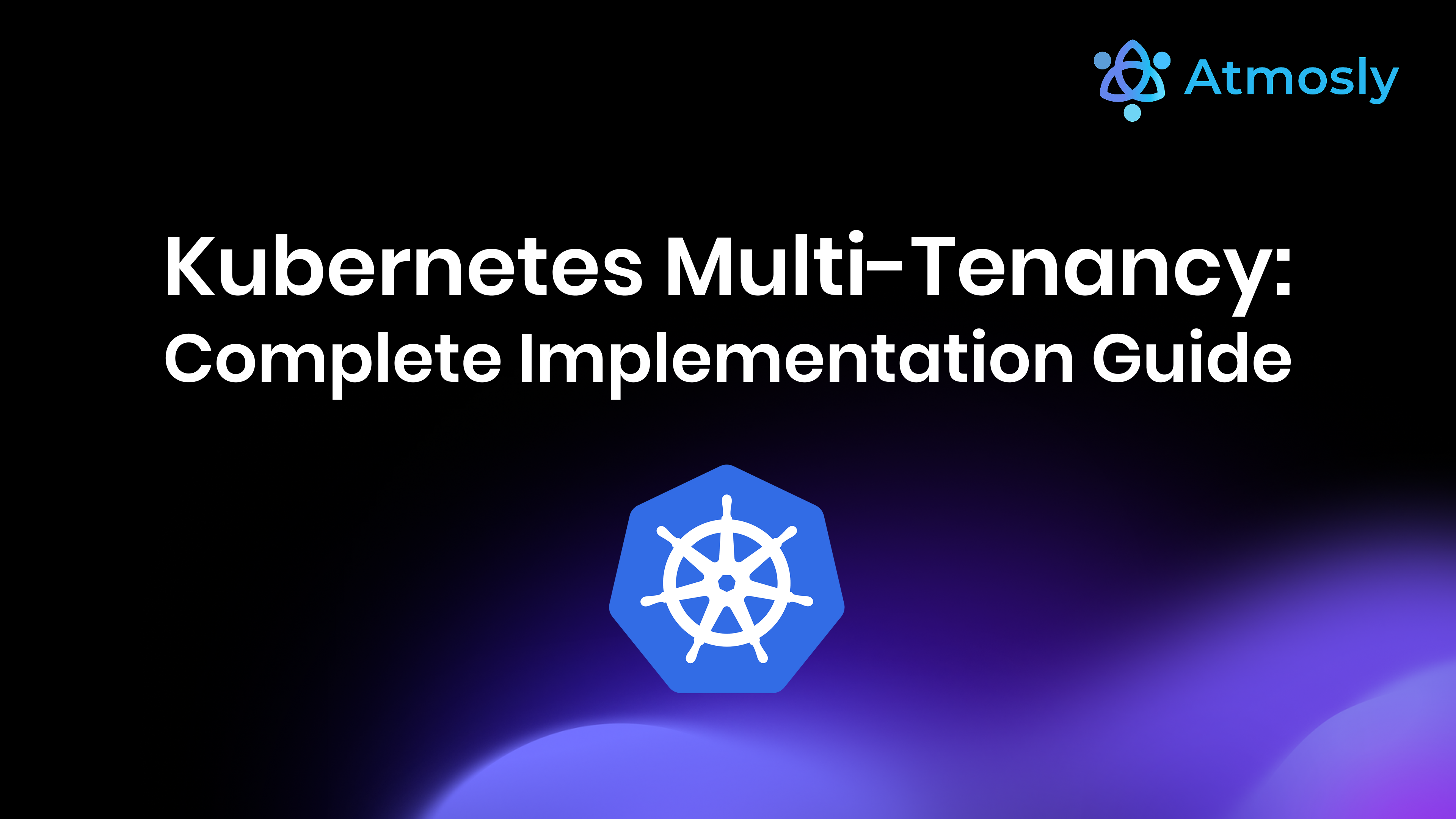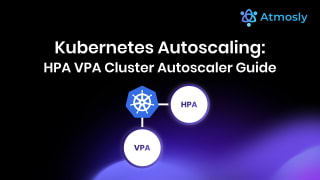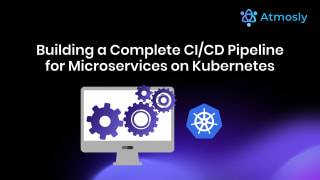Introduction to Kubernetes Multi-Tenancy
Kubernetes multi-tenancy is the practice of sharing a single Kubernetes cluster among multiple teams, projects, customers, or applications while maintaining strong isolation boundaries that prevent tenants from viewing, accessing, or affecting each other's workloads, data, and resources. Multi-tenancy enables significant cost savings by consolidating infrastructure—running 10 teams on one shared 100-node cluster instead of 10 separate 10-node clusters—while providing security isolation, resource fairness, and operational efficiency. However, implementing multi-tenancy incorrectly creates severe security risks where tenants can access each other's secrets, resource contention where one tenant monopolizes cluster capacity degrading performance for others, and operational complexity managing permissions, quotas, and policies at scale.
The fundamental challenge of multi-tenancy is balancing isolation against resource sharing: perfect isolation requires separate clusters per tenant eliminating sharing benefits, while no isolation creates a security and operational nightmare where any tenant can affect others. Production multi-tenancy requires implementing multiple layers of isolation including namespace separation for logical boundaries, RBAC for access control preventing cross-tenant access, NetworkPolicies for network isolation blocking unauthorized pod-to-pod communication, ResourceQuotas and LimitRanges preventing resource monopolization, Pod Security Standards enforcing security baselines per tenant, and monitoring/logging with tenant-level filtering for observability without exposing other tenants' data.
This comprehensive guide teaches you how to implement production-grade multi-tenancy in Kubernetes, covering: multi-tenancy models and when to use soft tenancy (namespaces) versus hard tenancy (separate clusters), namespace design patterns for organizing tenants, RBAC implementation giving each tenant admin access to their namespace while preventing cluster-wide access, NetworkPolicy configurations for zero-trust networking with default-deny and explicit allow rules per tenant, ResourceQuota and LimitRange strategies preventing resource starvation and ensuring fairness, Pod Security Standards enforcement per tenant with different profiles per environment, storage isolation using StorageClasses and PersistentVolume access modes, cost allocation and chargeback showing each tenant's resource consumption and cloud costs, monitoring and logging segregation allowing tenants visibility into their own metrics/logs without seeing others, and how Atmosly facilitates multi-tenancy through its organization and project structure where different teams get separate Atmosly projects mapping to separate Kubernetes namespaces, RBAC automatically configured preventing cross-team access with pre-configured roles (super_admin, read_only, devops) scoped per project/namespace, resource quotas enforced per project with alerts when approaching limits, cost allocation dashboard showing spend per team/project/namespace for chargeback, and environment management where each team can clone and manage their own environments without affecting others—providing the management layer that makes multi-tenant Kubernetes operationally sustainable at scale.
Multi-Tenancy Models: Soft vs Hard Tenancy
Soft Multi-Tenancy (Namespace-Based)
Architecture: Multiple tenants share same cluster, separated by Kubernetes namespaces
Use cases:
- Multiple internal teams in same organization (Team A, Team B, Team C)
- Multiple applications or projects with different owners
- Multiple environments (dev, staging, production) for same application
- SaaS applications where trust level between tenants is moderate (internal customers)
Isolation mechanisms:
- Namespaces provide logical boundaries
- RBAC controls who can access which namespaces
- NetworkPolicies block cross-namespace communication by default
- ResourceQuotas limit CPU/memory per namespace
- Same cluster, same control plane, same nodes (resources shared)
Pros:
- ✅ Cost-efficient (shared infrastructure)
- ✅ Simpler operations (one cluster to manage)
- ✅ Better resource utilization (sharing reduces waste)
Cons:
- ❌ Security risks (namespace isolation not absolute, kernel exploits could allow escape)
- ❌ Noisy neighbor (one tenant's load affects others)
- ❌ Limited customization (all tenants use same Kubernetes version, same add-ons)
Best for: Internal teams with some level of trust, cost-conscious organizations, standard security requirements
Hard Multi-Tenancy (Cluster-Per-Tenant)
Architecture: Each tenant gets dedicated cluster
Use cases:
- External customers in SaaS (zero trust between tenants)
- Compliance requirements mandating hard isolation (HIPAA, PCI-DSS)
- Different security postures per tenant (some highly secure, some standard)
- Tenants needing different Kubernetes versions or configurations
Isolation:
- Complete separation (separate control planes, separate nodes, separate networks)
- Kernel exploits contained to single tenant's cluster
- No resource contention between tenants
- Each cluster can have different configurations
Pros:
- ✅ Maximum security (complete isolation)
- ✅ No noisy neighbor issues
- ✅ Tenant-specific customization possible
- ✅ Meets strictest compliance requirements
Cons:
- ❌ Expensive (control plane cost per cluster + dedicated nodes)
- ❌ Operational overhead (managing 100 clusters vs 1)
- ❌ Reduced resource efficiency (each cluster has system overhead)
Best for: External multi-tenant SaaS, regulated industries, zero-trust requirements
Hybrid Approach
Combine both: Soft tenancy for internal teams, hard tenancy for external customers
Implementing Soft Multi-Tenancy with Namespaces
Namespace Design Patterns
Pattern 1: Namespace Per Team
# Team A namespace
kubectl create namespace team-a
kubectl label namespace team-a team=team-a [email protected]
# Team B namespace
kubectl create namespace team-b
kubectl label namespace team-b team=team-b [email protected]
# Each team gets namespace, manages their own applications
Pattern 2: Namespace Per Application
# Application namespaces
- frontend
- backend-api
- analytics-worker
- database
- monitoring
# Each application isolated, managed by owning team
Pattern 3: Namespace Per Environment Per Team
# Team A environments
- team-a-dev
- team-a-staging
- team-a-production
# Team B environments
- team-b-dev
- team-b-staging
- team-b-production
# Full isolation: Team A prod and Team B prod in separate namespaces
RBAC for Multi-Tenancy
Tenant Admin Role (Namespace-Scoped)
Give teams full control within their namespace, zero access outside:
# Role granting full access within namespace
apiVersion: rbac.authorization.k8s.io/v1
kind: Role
metadata:
name: tenant-admin
namespace: team-a
rules:
# Full control over application resources
- apiGroups: ["apps", "", "batch", "networking.k8s.io"]
resources: ["*"]
verbs: ["*"]
# EXPLICITLY no RBAC resources (cannot modify roles/bindings)
# EXPLICITLY no node access (cluster infrastructure off-limits)
---
# Bind Team A users to admin role in their namespace only
apiVersion: rbac.authorization.k8s.io/v1
kind: RoleBinding
metadata:
name: team-a-admins
namespace: team-a
subjects:
- kind: Group
name: team-a-developers # From OIDC/LDAP
apiGroup: rbac.authorization.k8s.io
roleRef:
kind: Role # Namespace-scoped
name: tenant-admin
apiGroup: rbac.authorization.k8s.io
Result: Team A users can kubectl apply, delete, scale in team-a namespace. Cannot even see team-b namespace exists.
Read-Only Access for Monitoring Teams
# ClusterRole for read-only across all namespaces
apiVersion: rbac.authorization.k8s.io/v1
kind: ClusterRole
metadata:
name: monitoring-viewer
rules:
- apiGroups: ["apps", ""]
resources: ["deployments", "pods", "services"]
verbs: ["get", "list", "watch"]
- apiGroups: [""]
resources: ["pods/log"] # View logs
verbs: ["get", "list"]
---
# Bind to monitoring team cluster-wide
apiVersion: rbac.authorization.k8s.io/v1
kind: ClusterRoleBinding
metadata:
name: monitoring-team-viewers
subjects:
- kind: Group
name: monitoring-team
apiGroup: rbac.authorization.k8s.io
roleRef:
kind: ClusterRole
name: monitoring-viewer
apiGroup: rbac.authorization.k8s.io
Network Isolation with NetworkPolicies
Default Deny All Cross-Namespace Traffic
# Applied to each tenant namespace
apiVersion: networking.k8s.io/v1
kind: NetworkPolicy
metadata:
name: deny-cross-namespace
namespace: team-a
spec:
podSelector: {} # All pods in namespace
policyTypes:
- Ingress
- Egress
# Only allow traffic within same namespace
ingress:
- from:
- podSelector: {} # Only pods in team-a namespace
egress:
- to:
- podSelector: {} # Only to pods in team-a namespace
# Also allow DNS (all tenants need)
- to:
- namespaceSelector:
matchLabels:
name: kube-system
ports:
- protocol: UDP
port: 53
Result: Team A pods can only communicate with other Team A pods, not Team B. Prevents lateral movement if Team A pod compromised.
Explicit Cross-Namespace Communication
If Team A frontend needs to call shared API in shared-services namespace:
# Allow Team A pods to reach shared-services
apiVersion: networking.k8s.io/v1
kind: NetworkPolicy
metadata:
name: allow-to-shared-api
namespace: team-a
spec:
podSelector:
matchLabels:
app: frontend
egress:
- to:
- namespaceSelector:
matchLabels:
name: shared-services
podSelector:
matchLabels:
app: api
ports:
- port: 8080
Resource Quotas and LimitRanges
ResourceQuota: Prevent Resource Monopolization
apiVersion: v1
kind: ResourceQuota
metadata:
name: team-a-quota
namespace: team-a
spec:
hard:
requests.cpu: "50" # Max 50 CPU cores requested
requests.memory: 100Gi # Max 100Gi memory requested
limits.cpu: "100" # Max 100 CPU cores limit
limits.memory: 200Gi # Max 200Gi memory limit
persistentvolumeclaims: "20" # Max 20 PVCs
services.loadbalancers: "3" # Max 3 LoadBalancer Services
count/deployments.apps: "50" # Max 50 Deployments
count/pods: "200" # Max 200 pods total
Effect: Team A cannot request more than 50 CPU cores total across all their pods. If they try to create deployment exceeding quota, admission denied.
LimitRange: Enforce Min/Max Per Container
apiVersion: v1
kind: LimitRange
metadata:
name: team-a-limits
namespace: team-a
spec:
limits:
# Container-level limits
- type: Container
min:
cpu: 50m # Minimum 50m CPU (prevent tiny inefficient pods)
memory: 64Mi
max:
cpu: 4000m # Maximum 4 CPU per container (prevent single pod monopolizing)
memory: 8Gi
default:
cpu: 500m # Default limit if not specified
memory: 512Mi
defaultRequest:
cpu: 250m # Default request if not specified
memory: 256Mi
# PVC limits
- type: PersistentVolumeClaim
min:
storage: 1Gi
max:
storage: 100Gi
Result: All pods in team-a namespace automatically get default requests/limits if not specified. Cannot create pod requesting 16Gi RAM (exceeds max 8Gi).
Storage Isolation
StorageClass Per Tenant
# Team A gets premium SSD (production workloads)
apiVersion: storage.k8s.io/v1
kind: StorageClass
metadata:
name: team-a-premium
provisioner: kubernetes.io/aws-ebs
parameters:
type: gp3
iops: "10000"
allowedTopologies:
- matchLabelExpressions:
- key: topology.kubernetes.io/zone
values:
- us-east-1a
---
# Team B gets standard HDD (dev workloads)
apiVersion: storage.k8s.io/v1
kind: StorageClass
metadata:
name: team-b-standard
provisioner: kubernetes.io/aws-ebs
parameters:
type: sc1
Teams cannot use each other's StorageClasses (RBAC controls creation).
PersistentVolume Access Control
Ensure Team A cannot mount Team B's volumes:
- Use dynamic provisioning (PVCs auto-create PVs)
- PVs automatically bound to namespace where PVC created
- RBAC prevents cross-namespace PVC mounting
Pod Security Standards Per Tenant
Different Security Profiles Per Tenant Type
# Team A (production, strict security)
kubectl label namespace team-a \\
pod-security.kubernetes.io/enforce=restricted \\
pod-security.kubernetes.io/audit=restricted
# Team B (development, more permissive)
kubectl label namespace team-b \\
pod-security.kubernetes.io/enforce=baseline \\
pod-security.kubernetes.io/audit=restricted
# System tenants (infrastructure)
kubectl label namespace monitoring \\
pod-security.kubernetes.io/enforce=privileged
Each tenant can have appropriate security posture for their use case.
Cost Allocation and Chargeback
Tracking Resource Usage Per Tenant
Use Prometheus to track namespace resource consumption:
# CPU usage by namespace (last 30 days)
sum(rate(container_cpu_usage_seconds_total{namespace!~"kube-.*"}[30d])) by (namespace)
# Memory usage by namespace
sum(container_memory_working_set_bytes{namespace!~"kube-.*"}) by (namespace)
# Calculate cost per namespace (requires cloud billing integration)
# Team A: 45 CPU-months × $30/CPU = $1,350
# Team B: 120 CPU-months × $30/CPU = $3,600
Implementing Chargeback
Bill teams for their actual usage:
- Resource-based: CPU-hours, memory-GB-hours, storage-GB-months
- Cost-based: Actual cloud cost per namespace (requires billing API integration)
- Request-based: Charge for requested resources (encourages right-sizing)
How Atmosly Facilitates Multi-Tenant Kubernetes (20% Content)
Organization and Project Structure
Atmosly's multi-tenancy model:
- Organizations: Top-level entity (your company)
- Projects: Teams or applications within organization (Team A, Team B, App X)
- Environments: Deployment environments per project (team-a-dev, team-a-prod)
- Mapping: Atmosly projects typically map to Kubernetes namespaces providing multi-tenancy boundary
Automated RBAC for Multi-Tenancy
When you create a project in Atmosly and assign team members:
- Atmosly automatically creates Kubernetes namespace for the project
- Configures RBAC: Project members get access to their namespace(s) only, cannot see or access other projects' namespaces
- Applies pre-configured roles: super_admin (full project access), read_only (view-only), devops (deploy applications, cannot modify RBAC)
- Creates Kubernetes ServiceAccounts mapped to Atmosly users for audit trail
- No manual RBAC YAML writing or ClusterRoleBinding configuration needed
Resource Quota Enforcement Per Project
Atmosly enforces resource quotas preventing tenant resource monopolization:
- Set quotas per project in Atmosly UI (Team A: 50 CPU, 100Gi RAM, Team B: 20 CPU, 40Gi RAM)
- Atmosly creates Kubernetes ResourceQuota in project's namespace automatically
- Alerts when project approaches quota (85%, 95% utilization)
- Dashboard shows quota usage per project: "Team A using 42/50 CPU (84%), consider increasing quota or optimizing"
Cost Allocation Dashboard Per Team
Atmosly's Cost Intelligence provides multi-tenant cost visibility:
- Per-Project Cost Breakdown: Shows monthly cost per Atmosly project/team - Team A: $4,200/month (18 services, 85 pods, 120 CPU cores) - Team B: $2,800/month (12 services, 45 pods, 60 CPU cores) - Team C: $1,100/month (5 services, 20 pods, 25 CPU cores)
- Resource Attribution: Integrates with cloud billing (AWS Cost Explorer, GCP Billing, Azure Cost Management) attributing compute, storage, network costs to respective Kubernetes namespaces/projects
- Chargeback Reports: Monthly cost reports per team for internal billing or showback demonstrating infrastructure costs
- Waste Identification: Highlights over-provisioned resources per team: "Team A has 15 CPU cores requested but only using 6 (60% waste = $270/month opportunity)"
- Budget Alerts: Set budgets per team, alert when approaching or exceeding: "Team B at 92% of $3,000 monthly budget, projected overage $240"
Environment Management Per Tenant
Each team manages their own environments without affecting others:
- Team A clones their production to create staging (only affects team-a namespaces)
- Team B creates preview environment for PR testing (isolated in team-b namespace)
- Teams cannot see or clone other teams' environments (RBAC enforced)
- Atmosly tracks which environments belong to which teams
- Cost and resource usage tracked per team's environments
Centralized Monitoring with Tenant Filtering
Atmosly provides monitoring where each team sees only their resources:
- Team A logs into Atmosly, sees only team-a-* namespaces and resources
- Metrics filtered by namespace automatically (Team A sees Team A pods, not Team B)
- Alerts scoped per team (Team A gets alerts for their services only)
- Audit logs show Team A's actions, not other teams (privacy)
- AI Copilot answers questions scoped to team's access: "Show me my pods" returns Team A pods only
Security Best Practices for Multi-Tenancy
1. Always Use NetworkPolicies
Default deny, explicit allow. Never rely on namespace isolation alone for security.
2. Enforce Pod Security Standards
All tenant namespaces should enforce baseline or restricted PSS (no privileged containers).
3. Separate Node Pools for Sensitive Tenants
Use taints to dedicate nodes to specific tenants:
# Taint nodes for Team A (payment processing, high security)
kubectl taint nodes node-1 node-2 node-3 \\
dedicated=team-a:NoSchedule
# Team A pods tolerate taint (only they can schedule on these nodes)
spec:
tolerations:
- key: dedicated
operator: Equal
value: team-a
effect: NoSchedule
# Team B pods cannot use these nodes (don't have toleration)
Provides kernel-level isolation (different nodes) within soft multi-tenancy.
4. Audit Tenant Actions
Enable Kubernetes audit logging tracking what each tenant does:
# API audit policy
- level: RequestResponse
users:
- system:serviceaccount:team-a:*
verbs: ["create", "update", "delete", "patch"]
# Log all modifications by Team A users
# Searchable logs:
# Who: [email protected] (or ServiceAccount)
# What: Created Deployment frontend
# When: 2025-10-27 14:30:00
# Where: namespace team-a
5. Implement Resource Quotas
Every tenant namespace must have ResourceQuota preventing monopolization.
Monitoring and Logging in Multi-Tenant Clusters
Tenant-Scoped Metrics
Each tenant should see only their metrics:
# Prometheus query for Team A only
container_memory_working_set_bytes{namespace="team-a"}
# Team A users cannot query Team B metrics (enforced by Prometheus RBAC or proxy)
Tenant-Scoped Logs
Logs must be filtered by namespace:
# Loki query for Team A logs only
{namespace="team-a"}
# Team A cannot query: {namespace="team-b"}
# Enforced by authentication and label-based access control
Conclusion: Production-Ready Multi-Tenancy
Kubernetes multi-tenancy enables efficient resource sharing while maintaining security and isolation. Success requires implementing multiple layers: namespace separation, strict RBAC, NetworkPolicies for network isolation, ResourceQuotas for fairness, Pod Security Standards for baseline security, and comprehensive monitoring with tenant filtering.
Multi-Tenancy Checklist:
- ✅ Namespace per tenant (team, application, or customer)
- ✅ RBAC limiting access to own namespace only
- ✅ NetworkPolicies denying cross-namespace traffic by default
- ✅ ResourceQuotas preventing resource monopolization
- ✅ LimitRanges enforcing container min/max resources
- ✅ Pod Security Standards (baseline minimum, restricted preferred)
- ✅ Separate secrets per tenant (never share)
- ✅ Storage isolation via dynamic provisioning
- ✅ Cost allocation tracking usage per tenant
- ✅ Monitoring and logging with tenant filtering
- ✅ Use Atmosly for project-based multi-tenancy with automated RBAC, cost allocation, and isolated environment management per team
Ready to implement secure multi-tenancy in Kubernetes? Start with Atmosly for project-based multi-tenancy with automatic RBAC configuration, resource quota enforcement, per-team cost allocation, and environment cloning scoped to each tenant.






